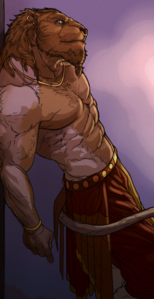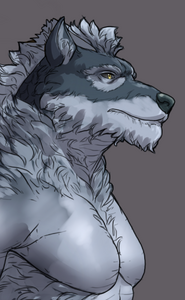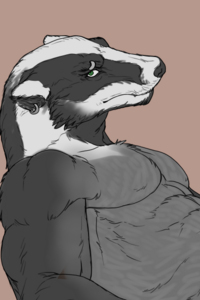More actions
mNo edit summary |
|||
| Line 3: | Line 3: | ||
|pronunciation = Ash-Sha | |pronunciation = Ash-Sha | ||
|classification = [[Gorr]] | |classification = [[Gorr]] | ||
|nicknames = | |nicknames = | ||
*Cat-people (derogatory) | *Cat-people (derogatory) | ||
| Line 10: | Line 9: | ||
*Cattlecat (Elven) | *Cattlecat (Elven) | ||
|languages = [[Common]], [[Ibeth]] | |languages = [[Common]], [[Ibeth]] | ||
|naming = Egyptian | |naming = Egyptian | ||
|distinction = | |distinction = Animalform beings who try to regain their lost glory | ||
|maxage = 140 | |maxage = 140 | ||
|eye = | |eye = Hues of brown and yellow, sometimes blue and green also | ||
|hair = | |hair = Fur patterns vary, with fur colors of ochre, brown, beige, white, black, etc. | ||
|}} | |}} | ||
[[File:FDOCD7ZXMAQgEP7.jpg|260px|thumb|right|Asha make excellent agile warriors due to their superior balance and physical activeness.]] | [[File:FDOCD7ZXMAQgEP7.jpg|260px|thumb|right|Asha make excellent agile warriors due to their superior balance and physical activeness.]] | ||
| Line 23: | Line 22: | ||
[[File:FBO5Tz6XMAIvMmu.jpg|260px|thumb|right|Living Metal does not actually need to be gray, it can be recolored to any preferred color (green pictured).]] | [[File:FBO5Tz6XMAIvMmu.jpg|260px|thumb|right|Living Metal does not actually need to be gray, it can be recolored to any preferred color (green pictured).]] | ||
[[File:FAVX0VgWQAERuwn.jpg|260px|thumb|right|Asha clothing and modesty standards in other societies are often at odds. The Asha try to adapt, but have to avoid overheating beneath all that fur.]] | [[File:FAVX0VgWQAERuwn.jpg|260px|thumb|right|Asha clothing and modesty standards in other societies are often at odds. The Asha try to adapt, but have to avoid overheating beneath all that fur.]] | ||
[[File:28b92e4a58189b5bd2dc107958d9674a.png|260px|thumb|right|Rat Asha are some of the most energetic loose- | [[File:28b92e4a58189b5bd2dc107958d9674a.png|260px|thumb|right|Rat Asha are some of the most energetic, loose-cannon type Asha that can be found, compensating as short kings.]] | ||
[[File:FQHEv iX0AUImOP.jpg|260px|thumb|right|Asha with mutations are exceedingly rare. This Asha has horn mutations, but an otherwise elegant fur pattern and color.]] | [[File:FQHEv iX0AUImOP.jpg|260px|thumb|right|Asha with mutations are exceedingly rare. This Asha has horn mutations, but an otherwise elegant fur pattern and color.]] | ||
[[ | ==Origins== | ||
[[ | The Asha are one of the oldest [[Races]] in [[Aloria]] today, whose peak of civilization was millennia in the past as leaders of the [[Dewamenet Empire]]. However, their rise had the great misfortune to be within sight of the [[Allorn Empire]] and its first Empress, [[Talea]], daughter of [[Estel]] and prophetess of the [[Estellon]] Faith. Relations between the Asha and the Allorn soon deteriorated, and the war that followed had an unfathomable death toll. The Asha were ultimately broken over the knee of Allorn domination, and millions of their kind were enslaved by the [[Teledden]] and their fellow [[Nelfin]]. It was on the backs of the Asha that great works and the golden age of the Allorn Empire came to pass, but their blood was spilled more directly as the Teledden and others fell into worship of the [[Void]], sacrificing uncountable thousands of Asha slaves in sinister rituals in the name of dark arcane power. This abysmal existence came to an end in the [[Cataclysm]] and [[Wildering]], when [[Magic]] across the world changed forever, and the slave masters found themselves relatively powerless compared to before. For the first time in centuries, Asha slew Teledden, [[Fin’ullen]] and many more in a mass revolt alongside other oppressed Races while wielding their Living Metal. The Asha led the anti-slavery charge out of the ruins of the Allorn Empire, fleeing enmasse to the eastern coastline of their ancient prison, and building massive bridges of Living Metal to reach an oasis where they could be safe; the [[Ashal Islands]]. They were guided in this by the Siwath-Khenu, Asha who had hidden at the fringes of the world and now helped to guide their people home. The ancient, hidden machinery came alive in the presence of the former slaves and survivors both. Ever since that time, the Asha have continued to rise and delve into their lost past for answers, and even greater technology, much to the disdain, horror, but also fear, of many Teledden and their closest allies. | ||
[[ | |||
[[ | |||
[[ | |||
[[ | |||
[[ | |||
==Core Identity== | ==Core Identity== | ||
To be Asha is | To be an Asha is to be a person whose past heritage and glory was stolen very violently and magically, leaving an eternal mark upon one’s mentality. Many Asha live free, and thrive with that great freedom, but are forever concerned, suspicious and paranoid about events which might draw them into a status of servitude once more. Some are lost on their own, unable to find purpose when leaving their homes into a wider world full of possible threats, and so cling to others of their kind when found as oases of sanctuary and stability. Others view the clean slate of a lost past as freeing, with a certain history so recent leaving them to define themselves, and live a unique life apart, or central, to a community, able to experiment or explore. It is this last part in particular that the Asha have clung to, the idea that they were denied freedoms, dreams and goals for centuries, and as such should taste as much of it as they can possibly get their hands on. An Asha never seeks to sit still, always seeking the next opportunity, whether that is to acquire material, sentimental, or emotional value. | ||
===Ashal Diaspora=== | ===Ashal Diaspora=== | ||
While the Asha have reclaimed a new homeland, they are still a people without easy access to their original place of origin. Some do, such as the tribes of the Siwath-Khenu, but they are few in number, and empty deserts with scattered ruins often targeted for destruction by [[Ithanian]]-hired gangs are a poor substitute for the marvels of the past. Even the Ashal Islands are not completely safe, for they sit extremely close to Teledden territories, and latent fears of an attack against this land dwell among the populace. For that reason, while many Asha thrive on the Islands, there is an itinerant undertone to the Race through their Corsair Fleets which sail the waters of the world, and the enclaves of free Asha surviving in lands east of their ancient homeland. This is more true now than ever, as the population of Asha in [[Corontium]] continues to grow. | |||
===Recaptured Past=== | ===Recaptured Past=== | ||
Asha are always piqued by hints of the past, or small clumps of history they can latch onto that reveal more of what the Dewamenet Empire once was. Every Asha grows up with tales of the great Empire they once created thousands of years ago, and how it was violently stolen from them by the | Asha are always piqued by hints of the past, or small clumps of history they can latch onto that reveal more of what the Dewamenet Empire once was. Every Asha grows up with tales of the great Empire they once created thousands of years ago, and how it was violently stolen from them by the Allorn who then proceeded to enslave them for an almost inconceivable long amount of time. Each artifact or discovery made of the Dewamenet Empire unleashes fervent discussions and debates among the Asha for the implications, and any new strip of information, or a chance to speak to some divine entity to discover more of the Dewamenet past is sure to invigorate any Asha. The Siwath-Khenu are often at the heart of these efforts, while those of the fleets and the cities seek to exert their wealth or power in guaranteeing their safe transport back home. | ||
===Identity Crisis=== | ===Identity Crisis=== | ||
The Asha are a Race uniquely beset by a Mundane vs. Occult identity crisis, and a wider set struggle of clan-favoritism. Thousands of years of | The Asha are a Race uniquely beset by a Mundane vs. Occult identity crisis, and a wider set struggle of clan-favoritism. Thousands of years of slavery at the hands of [[Elves]] have left many of the Asha changed, some permanently, in ways that others would consider lost or disfigured. While there is a general sentiment that any Asha, even Half-Asha, have the right to reclaim their heritage, some Asha find other Asha who use Magic hard to stomach, especially because Magic was used to steal so much from them. Asha aren’t hateful of Magic outside of their Race, but have a very hard time processing why any Asha would willingly give into dabbling with these infernal forces. With the strict anti-Occult stance taken by the Corsair Fleets and the Ashal States, what few Asha [[Mages]] exist have to often live in other countries that tolerate their crafts. They often find great solace with the [[Silontaar]], the offshoot of the Asha people who are magically gifted and live in distant isolation. | ||
==Design== | ==Design== | ||
===Mental Characteristics=== | ===Mental Characteristics=== | ||
The Asha do not really have any unifying personality traits. | The Asha do not really have any unifying personality traits. As a Race that was beaten into submission for so long, many old customs and traditions were lost or fragmented with time, meaning most modern Asha are a clean slate in terms of mentality towards the world, each other and themselves. Perhaps the only real unifying trait that the Asha have is pride in their fur and especially their tail. Asha can be gregarious or shy, energetic or sluggish, but between all of them, regardless how extroverted they are, one does not touch their fur without their permission, and above all one never touches their tail. It was common practice in the Allorn Empire to cut off Asha tails, and so their first recaptured sentiment is that their fur and tails are their own, and no-one may violate them without their strict consent, a freedom denied them in the past. | ||
===Physical Characteristics=== | ===Physical Characteristics=== | ||
The Asha can best be described as furred humanoids with heads and body parts shaped more like that of | The Asha can best be described as furred humanoids with heads and body parts shaped more like that of animals than one would see in a traditional [[Ailor]] or Nelfin. The Asha are similar to [[Urlan]] in that they have the head of an animal, but the body of a bipedal humanoid, but different to the Urlan in that they are entirely covered in fur at all times, and have a much broader spectrum of appearance. Because of intentional breeding programmes endured while enslaved, many of the Asha have diversified to such a point that there is no common trend of physical appearance. Asha can be slender, bulky, stout, lanky, petite, voluptuous, ranging from [[Dwarven]] shortness to the tallest of Teledden height and more. There are some additional physical traits to note below. | ||
===Animal Types=== | ====Animal Types==== | ||
The specific Animal Types available to make Asha Characters is quite expansive, but there are some limitations and expectations placed on the Players. Below is a full list of all available Asha Types: | The specific Animal Types available to make Asha Characters is quite expansive, but there are some limitations and expectations placed on the Players. Below is a full list of all available Asha Types: | ||
* '''Canine Species:''' Think of Wolves, Foxes, Domestic Dogs, Wild Dogs, | * '''Canine Species:''' Think of Wolves, Foxes, Domestic Dogs, Wild Dogs, Jackals, Dingoes, Coyotes, etc. It is important however when choosing Canine Species that the Character is never mistaken for a Werewolf-like [[Marken]]. | ||
* '''Rodent Species:''' Think of Rats, Bats, Mice, Possums, Meerkats, Minks, Badgers, Chinchillas, etc. It is important when choosing Rodent Species that the Character doesn’t become a Skaven mockery. | * '''Rodent Species:''' Think of Rats, Bats, Mice, Possums, Meerkats, Minks, Badgers, Chinchillas, etc. It is important when choosing Rodent Species that the Character doesn’t become a Skaven mockery. | ||
* '''Feline Species:''' Think of Tigers, Lions, Leopards, Cougars, Jaguars, Ocelots, Sabretooths, etc. This also includes Domestic Cat species like Tabby Cats, Maine Coons, Siamese Cats, | * '''Feline Species:''' Think of Tigers, Lions, Leopards, Cougars, Jaguars, Ocelots, Sabretooths, etc. This also includes Domestic Cat species like Tabby Cats, Maine Coons, Siamese Cats, etc. | ||
* '''Bear Species:''' Think of Pandas, Polar Bears, Brown Bears, Grizzly Bears, Black Bears, etc. | * '''Bear Species:''' Think of Pandas, Polar Bears, Brown Bears, Grizzly Bears, Black Bears, etc. It is important to note that Humanoid proportions remain in effect and being a Bear does not grant Combat RP advantages. | ||
* '''Other Species:''' A list of other less categorical species are also available like Kangaroos, Koalas, Horses, Deer, Sheep, Hyenas, Otters, Primates like Gorillas or Lemurs, Beavers, Donkeys, Okapi. | * '''Other Species:''' A list of other less categorical species are also available like Kangaroos, Koalas, Horses, Deer, Sheep, Hyenas, Otters, Primates like Gorillas or Lemurs, Beavers, Donkeys, Okapi. | ||
* '''Hybrid Species:''' Asha can produce Hybrids of any of the animal types above. This can include combinations like Wolf/Fox, Cat/Fox, Fox/Rabbit, Tiger/Raccoon combinations, etc. | * '''Hybrid Species:''' Asha can produce Hybrids of any of the animal types above. This can include combinations like Wolf/Fox, Cat/Fox, Fox/Rabbit, Tiger/Raccoon combinations, etc. Hybrids can only ever be a combination of 2 species. | ||
If unsure if a Species is acceptable while not mentioned on this list, as this list is fairly strict, please send in a ticket to the Ticket Bot | If you are unsure if a Species is acceptable while not mentioned on this list, as this list is fairly strict, please send in a ticket to the Ticket Bot in the [https://discord.gg/massivecraft-roleplay RP Community Discord]. When Asha reproduce with different Species, children are born with 80% chance of the species of either parent, and 20% chance of a completely random species from the list above. Same species parents reproducing always results in the same species children. | ||
===Fur Patterns & Colors=== | ====Fur Patterns & Colors==== | ||
Asha Fur Patterns and Colors can be varied and wild. They can have the traditional fur patterns and colors of the species such as for example orange and white fur on black stripes of Tigers, | Asha Fur Patterns and Colors can be varied and wild. They can have the traditional fur patterns and colors of the species they share an appearance with, such as for example orange and white fur on black stripes of Tigers. However, different colors are also possible, for example a black-furred Tiger with white stripes and brown spots. Patterns that do not occur on specific species can also be used, for example the white and black stripes of a Zebra can be seen on an Otter Asha. The only limitation is that the colors cannot be excessively vibrant, like those of the Silontaar Race. For example, a Fennec Asha with a gentle soft pink or mint-green fur and white belly patches is acceptable, but not a hot-pink and cyan-blue Horse Asha. It is always also important that skin colors do not allow for a Minecraft Skin to be misidentified as a different Race. When for example dabbling in greens, make sure the Minecraft Skin does not get mistaken for a reptilian [[Allar]]. Asha eyes are fairly varied. They can have either white, gray, or black eye whites, while their pupils can be any shade of blue, green, gray, brown, or yellow. | ||
===Half-Asha=== | ===Half-Asha=== | ||
The Asha have a unique attitude towards the Half-Asha, in that they consider the Half-Asha full-blooded members of their Race, even if they look very little like them | The Asha have a unique attitude towards the Half-Asha, in that they consider the Half-Asha full-blooded members of their Race, even if they look very little like them. Half-Asha can reproduce with any Race that can also reproduce with other Races, which will always result in Half-Asha called Feka-Asha. Feka-Asha take traits from their non-Asha parent, so if the mother is a Fox Asha and the father is an Ailor, the Feka-Asha child would for example have fox ears, fur on the arms and legs, and a fox tail, with Asha eyes. While players have a lot of liberties when it comes to designing what traits Feka-Asha inherit from their Asha parent, the Lore Staff asks the players to please respect the design of the Race and not dilute physical traits to the point of non-recognition. What this means is that a person who looks presentably just like a normal person, but with Bunny ears on top of their human hair, is not a Feka-Asha. A person who has only whiskers, cat ears, and cat claws, is not a Feka-Asha. These aesthetics are easier to reproduce with [[Mutations]]. Minecraft Skins should always be able to read that a person is a Feka-Asha, and if the animal-like traits on the person have been reduced to the point of single-traits, then a Character is not a good Feka-Asha design. | ||
== | ===Asha in Regalia=== | ||
Racial Abilities are generally a set of unique powers and effects that all peoples of that Race all innately have, while Specials are more passive, aesthetic focused capabilities. Specials are defined per-page, while Abilities can be searched on the Ability List page to determine their generic function. Asha have a mix of Abilities and Specials themed around | The Asha formerly had a very rough time in the [[Regalian Empire]], the significant Ithanian influence on the former [[Imperial Family]] seeing them remain low in social standing, and existing as social pariahs, with vast amounts of misinformation spread as to their nature and millions of their kind remaining in bondage. However, beginning in 250 AC, the Corsair Fleets of the Asha showed their immense strength in several engagements, and Ithanian influence waned in court politics. By the time Emperor [[Alexander I]] ascended to rule the Empire with the passing of the torch to [[House Kade]] from [[House Ivrae]], the Asha were actively courted to be allies against the Teledden and other [[Altaleï]] Nelfin. This saw Asha move to Corontium, the heartland of the Regalian Empire, in unheard of numbers compared to the prior two centuries, and thriving settlements popped up on previously lightly inhabited southern islands. The Ashal Islands are now also part of the Crown Alliance, a military pact formed by the Regalian Empire with other major nations. Despite these improved ties, there is still a tension regarding the Asha’s active involvement in antagonizing [[Sovereign Ithania]], and other minor actions taking place in the name of the Dewamenent legacy. Ultimately, the Asha are a people on the rise in Regalia, isolated from some parties, embraced by others, but not to be underestimated with their uniquely ancient culture, and marvelous technological capabilities. | ||
===Abilities=== | ===Racial Abilities & Specials=== | ||
Racial Abilities are generally a set of unique powers and effects that all peoples of that Race all innately have, while Specials are more passive, aesthetic focused capabilities. Specials are defined per-page, while [[Abilities]] can be searched on the [[Ability List]] page to determine their generic function. Asha have a mix of Abilities and Specials themed around Living Metal, their Physical Form and Ancient Knowledge. Half Race characters select a Dominant parent, and take all the Racials & Specials from that dominant parent. (In this case, a dominant parent Asha would be Half-Asha) Half Races must have a majority of their physical features come from their dominant parent, including but not limited to skin tone, hair or fur color, ear shape, or eye color. | |||
====Abilities==== | |||
{| class="wikitable" | {| class="wikitable" | ||
|- style="font-weight:bold; text-align:center; background-color:#c0c0c0;" | |- style="font-weight:bold; text-align:center; background-color:#c0c0c0;" | ||
| Line 121: | Line 107: | ||
|- | |- | ||
|} | |} | ||
====Specials==== | |||
===Specials=== | *'''Dewamenet Legacy:''' The Asha Living Metal is inexplicably linked to their Mundane status. If an Asha becomes Occult whether through [[Affliction]] or by learning Magic, Asha no longer have access to Living Metal. The Specials / Abilities derived from Living Metal are still there, however, the Living Metal is replaced with Magical Energy which is a formless glowing light of any color chosen by the player. Additionally, Asha gain the [[Spell Point Buy]] Special Lightning Immune without needing a Spell Point Buy investment, and without being Occult. | ||
* '''Dewamenet Legacy:''' The Asha Living Metal is inexplicably linked to their Mundane status. If an Asha becomes Occult whether through Affliction or by learning Magic, Asha no longer have access to Living Metal. The Specials / Abilities derived | *'''Dewamenent Born:''' If an Asha invests at least 1 Point in either [[Technician Point Buy]] or [[Artificer Point Buy]], they can pick Living Metal as their branch, even if they did not invest in technician. | ||
* '''Dewamenent Born:''' If an Asha invests at least 1 Point in either Technician Point Buy or Artificer Point Buy, they can pick Living Metal as their branch, even if they did not invest in technician. | *'''Ferromancy:''' Living Metal grants the Asha greater control over [[Iron]] (not [[Steel]]). Through controlling Living Metal, the Asha gain telekinesis over Iron within Emote Range, thus being able to open doors from a distance by controlling the hinges, levitating iron nails and pushing them into place, and other such aesthetic actions. | ||
* '''Ferromancy:''' Living Metal grants the Asha greater control over Iron (not | *'''Dewamancy:''' The Asha have great control over Living Metal, being able to steer it around in the air like a liquid, and shape it into any shape they like. Living Metal has a great degree of flexibility, being able to create more intricate and finely detailed designs than normal metals would. The Asha can also use their Living Metal to restart Living Metal Constructs found in [https://forums.massivecraft.com/forums/world-progression-events.270/ Progressions]. | ||
* '''Dewamancy:''' The Asha have great control over Living Metal | *'''Feshawatmancy:''' The Asha can also control a substance called Feshawat, or Living Glass, which is similar to living Metal, except see-through and made of glass. Additionally, they are only able to steer it and shape it while making physical contact with it, but otherwise it behaves like Living Metal. Feshawat is fragile and despite its liquid form, can be shattered with weapon impact. The controller can also give it any color they like, or any texture or inner material like glitter or color ribbons within the glass-like material like glass marbles. | ||
* '''Steam Control:''' The Asha have a great deal of control over the temperature of water, both ambiently, and within close proximity to them. The Asha are able to flash-boil any liquid on them, causing it to instantly evaporate. Additionally, they can flash-boil any larger amount of liquid near them, causing it to instantly develop steam. Steam never hurts an Asha, nor does dry heat. This liquid boiling cannot be used to harm others or in Combat. | * '''Steam Control:''' The Asha have a great deal of control over the temperature of water, both ambiently, and within close proximity to them. The Asha are able to flash-boil any liquid on them, causing it to instantly evaporate. Additionally, they can flash-boil any larger amount of liquid near them, causing it to instantly develop steam. Steam never hurts an Asha, nor does dry heat. This liquid boiling cannot be used to harm others or in Combat. | ||
* '''Body Vent:''' The Asha are capable of some degree of control over their body’s size through steam eruptions. By venting a great deal of heat from their body, Asha can either lower their Body Shape (becoming more slender, shorter) or increase it (becoming taller, more muscular). This is purely aesthetic and confers no Combat Advantages. | *'''Body Vent:''' The Asha are capable of some degree of control over their body’s size through steam eruptions. By venting a great deal of heat from their body, Asha can either lower their Body Shape (becoming more slender, shorter) or increase it (becoming taller, more muscular). This is purely aesthetic and confers no Combat Advantages. | ||
* '''Sulfur Control:''' Asha claws have curious sulfuric attributes. When struck against hard porous surfaces like stone or metal, they produce a flint-and-steel like spark, thus being able to ignite cigarettes or small tinder. If an Asha claps their hands together quickly, making the nails touch, they can produce harmless gunpowder explosions that produce a loud clap, flash of light, and puff of smoke. Flicking their nails can also produce a firecracker-like effect. This cannot be used to obscure vision in Combat. | *'''Sulfur Control:''' Asha claws have curious sulfuric attributes. When struck against hard porous surfaces like stone or metal, they produce a flint-and-steel like spark, thus being able to ignite cigarettes or small tinder. If an Asha claps their hands together quickly, making the nails touch, they can produce harmless gunpowder explosions that produce a loud clap, flash of light, and puff of smoke. Flicking their nails can also produce a firecracker-like effect. This cannot be used to obscure vision in Combat. | ||
* '''Predator Vision:''' Asha have night vision in dark environments and at night, giving them perfect vision in darkness. This allows them to see even in low light environments inside, but does not protect them against Ability based Darkness. Asha also have excellent depth vision, allowing them to snatch for example buzzing flies from the air with ease. | *'''Predator Vision:''' Asha have night vision in dark environments and at night, giving them perfect vision in darkness. This allows them to see even in low light environments inside, but does not protect them against Ability based Darkness. Asha also have excellent depth vision, allowing them to snatch for example buzzing flies from the air with ease. | ||
*'''Deathspeech:''' Asha are capable of speaking and understanding | *'''Deathspeech:''' Asha are capable of speaking and understanding Deathspeech or Shadetongue either when it is spoken by [[Ordial]] Entities, or by others. Deathspeech is a unique [[Language]] because it cannot be learned the traditional way, only specific Races and Afflictions have access to it. Additionally, it is also a language that has no defined alphabet and cannot be properly read, the runes and markings varying between the [[Cultures]] and Ordial cults that use it, though it is always identifiable as Deathspeech. It also defies being recorded, as the sound just becomes gibberish when any type of recording medium is used to try and replay it, even memory-based Abilities or Specials. | ||
*'''Asha Aesthetics:''' Asha tend to not use Magic, but if they do, it is mostly Ordial in nature, and usually has aesthetics based on funerary rituals. They are more inclined to machinery powered and made with Living Metal. | |||
* '''Asha Aesthetics:''' Asha tend to not use | |||
== | ==Culture== | ||
Asha | <!--#################################### CURIA CORDIS ##############################################--> | ||
{| class="wikitable" | |||
{| style="color: black; background-color: #D8D6A2; width: 90%;" align="center" | |||
! colspan="3" | | |||
Asha Cultures | |||
|- style="background:#eee;" | |||
| rowspan="2" style="width: 7%; text-align:center;" | | |||
'''Niwtah’''' | |||
[[File:noimg.png|100px]] | |||
| | |||
The Niwtah, City, or otherwise called Kingdom Asha, are the largest population of the Asha people. They are based in the Ashal Kingdoms of the Ashal Islands, though some have recently migrated to lands in Corontium under the Regalian Empire. They benefit from marvelous works of Living Metal, and often devote their time to more artistic or cultural pursuits. They are not bereft of warriors, however, and are known for their powerful land armies, though a general muster has never occurred. The Niwtah culture is based on Ancient Egypt. | |||
|- style="background:white;" | |||
| | |||
*The Niwtah idolize the ancient past of the Dewamenent, and are in constant search of more knowledge from this ancient time. | |||
*The Niwtah often have high standards, both for themselves and others, while also focusing greatly on their appearance due to lives of near-total luxury. | |||
*Niwtah goods, from furniture to daily use objects to Living Metal machinery, are highly prized by many outsiders, being hard to acquire due to their lack of trade with external powers. | |||
*The Niwtah speak Ibeth, based on Ancient Egyptian. | |||
*The cultural pursuits of the Niwtah often make them elegant dancers and performers, capable of marvelous feats in conjunction with Living Metal or Living Glass. | |||
*The Niwtah are devoted to the [[Faces of Baskarr]], but mortuary cults exalting Ordial powers hold great sway in certain population centers. | |||
*Niwtah systems of organization are entirely matriarchal, family lines traced through women first, and all Ashal Kingdoms are ruled by queens. | |||
*The Niwtah are believed to have created Feshawat, or Living Glass, the great and oft-forgotten companion to Living Metal. | |||
*The Niwtah view most Occult practices as unacceptable, and Magic is not taught within their domain, on punishment of death. They do make an exception regarding Ordial-based Affinities or Afflictions. | |||
*The Niwtah love the colors orange, brown and gold, alongside symbolism of liquid metal/Living Metal, Living Glass, the sun and moon intertwined, great statues, and lounging chairs. | |||
<!--#########################################################################################################--> | |||
|- style="background:#eee;" | |||
| rowspan="2" style="width: 7%; text-align:center;" | | |||
'''Hetawpesh''' | |||
[[File:noimg.png|100px]] | |||
| | |||
The Hetawpesh or Corsair Asha are far more commonly seen in wider Aloria compared to the Niwtah Asha. While briefly finding peace in the Ashal Islands, the original Corsairs soon departed to carry out a mission of vengeance against their ancient oppressors, as well as seeking out foreign knowledge and skills. Many are pirates, hunting and destroying vessels of slave-keeping civilizations, though others tend to large floating cities on the waves, or sell their services for coin. The Hetawpesh culture is based on a blend of Ancient Egypt and the Barbary pirates of North Africa with a healthy dose of fantastical elements. | |||
|- style="background:white;" | |||
| | |||
*The Hetawpesh make up the armed naval forces of the Asha world, building, repairing and sailing vessels of an ancient design, updated with modern knowledge and controlled with Living Metal. | |||
*Many Hetawpesh learn skills associated with the sea as their first calling in life, for water is often all around them, and these skills can benefit them later in life if they leave a Fleet behind. | |||
*Hetawpesh warriors train from a young age and are often highly skilled in working independently from one another due to how disorganized their melees can get when boarding at sea or raiding coastal targets. | |||
*The Hetawpesh speak Ibeth, but are also more likely to speak foreign tongues due to their extensive travels across Aloria. | |||
*Hetawpesh society is gender equal, each Corsair Lord, Lady or Lirh overseeing a domain under their command, and often engaging in ritual marriage to the Queens of the Ashal Islands. | |||
*Hetawpesh society is the most fragmented when it comes to faith. While some groups follow the Faces, others are wholly devoted to beings like [[Khannar]] from the Ordial plane. Some groups are even more open, and worship other faiths introduced by the non-Asha in their ranks. | |||
*Hetawpesh warriors forced to leave their homes commonly find work in fighting pits, or are guards for people willing to pay the high prices they often fetch. | |||
*The Hetawpesh are often the executioners of the Occult and Mages, with any found at sea being killed. Even the exception for Ordial powers is not as strongly enforced, and some Ordial Corsair Fleets kill other Ordial-powered groups due to the nature of the beings they worship. | |||
*The Hetawpesh love the colors red, black, blue and gold, with symbolism of the sea, ships of Asha design, claws, blood, storms, and broken chains. | |||
<!--#########################################################################################################--> | |||
|- style="background:#eee;" | |||
| rowspan="2" style="width: 7%; text-align:center;" | | |||
'''Siwath-Khenu''' | |||
[[File:noimg.png|100px]] | |||
| | |||
The Siwath-Khenu are the oldest Asha culture to exist in Aloria today, and formed from the original survivors of the mass-enslavement of the Dewamenet by the Allorn Empire. The Siwath-Khenu thrived by hiding in the depths of the desert in [[Ithania]], among the ruins of their people, but some also kept close to the soon-barren Ashal Islands, in hidden coastal enclaves. They remained at the fringe for millennia, keeping ancient traditions alive, before helping their people achieve The Great Journey to their new homeland. Today, they remain, but are the least populous of the Asha subcultures, with most who remain surviving in the Ithanian desert, but some have come to the Ashal Islands, and keep to the isolated, barren lands of the interiors to each island. The Siwath-Khenu culture is based on ancient/classical Numidian culture. | |||
|- style="background:white;" | |||
| | |||
*The Siwath-Khenu are heavily devoted to faith in the Faces, worship of the gods, and the understanding of Living Metal and Glass. | |||
*The Siwath-Khenu kept alive many ancient traditions of animal taming, alongside the use of Living Metal for their people’s Mounts. They are notable for their cavalry skills as a result. | |||
*Siwath-Khenu clothing is often more layered than that of other Asha, as millennia of hot suns, and concealment taught them to guard their bodies from both the elements and enemy eyes. | |||
*The Siwath-Khenu speak Ibeth, but are most skilled in the translation of the ancient Dewamenet writing and language system. They crafted the base of modern Ibeth, and continue to expand its lexicon. | |||
*Siwath-Khenu are commonly said to appear as fast as they disappear, and are masters of movement and motion, both atop their animals of combat, and on their feet | |||
*The Siwath-Khenu follow the Faces of Baskarr deeply, as most believe it was their memory of these gods which kept them alive when the Asha were broken and enslaved. They have a particular devotion to [[Baskarr#Gods_and_Goddesses|Wadj, Gaze upon Infinity]], and are said to guard against his seduction of the weak minded by their constant vigilance. | |||
*Siwath-Khenu found beyond the deserts are commonly tracking down slavers or auctions of ancient objects of their people. Some also travel to distant Asha groups to engage in religious matters. | |||
*Siwath-Khenu tribes were once internally divided in a loose mirror to that of the modern Asha. The interior tribes plied the deserts, while the coastal tribes plied the seas, such as they could with Allorn superiority. The coastal tribes were absorbed into both the Niwtah and Hetawpesh subcultures, leaving the deep desert tribes to last until the modern day. | |||
*The Siwath-Khenu are commonly held as the source for the Asha’s modern ties to Ordial power, and are often more lenient, and aware, of the broader range of Occult that exist. They are thus often more accepting of Affinities and Afflictions, but still abhor Mages. | |||
*The Siwath-Khenu favor color schemes of grays, beige, and white, with symbolism of baking deserts, mirages, burning incense, mounted warriors, walking staffs, scorpions and shadows. | |||
|} | |||
|} | |||
[[File:Elastaanpopular.png|260px|thumb|right|Elastan is a fabric developed by the Asha and frequently favored by them for its aquatic properties.]] | |||
[[File:Decorum.png|260px|thumb|right|Traditional Asha attire can compete with the best of other Races' dress-codes in stylishness.]] | |||
[[File:Rabbo2.png|260px|thumb|right|Rabbit-like Asha are rarely seen in Regalia, yet an exotic friend to have for many.]] | |||
[[File:Rkhaeti.png|260px|thumb|right|Saber teeth as a trait can actually occur in any Asha animal type species, not just Felines.]] | |||
[[File:Decorumanub.png|260px|thumb|right|Asha love golden decorations and even apply fur paint like make-up, worn by any gender.]] | |||
[[File:Downotter.png|260px|thumb|right|Some Asha have fur patterns inverted, with a darker soft body color.]] | |||
[[File:Varranclaws.png|260px|thumb|right|Asha claws are very dangerous in a fight, even a playful one.]] | |||
[[File:LMetal.png|260px|thumb|right|Living Metal can be made to replace missing body parts with great efficiency.]] | |||
==Language== | |||
The Asha speak a [[Language]] called Ibeth, a modern Language developed from the interpretations of Dewamenet writing left on the Ashal Islands and in the Ithanian deserts. As such, the Asha Language has a written alphabet of hieroglyphics that dates back to the Dewamenet era, but a spoken language and phonology that is entirely modern. The Ibeth language has no common ancestry with any other Language across Aloria, and is purely made out of what little words the Asha understand from the past with the context of writing applied on top, and the gaps filled in by more intellectually inclined Asha. Ibeth sounds fairly guttural, with soft g’s and ch’s and hard kh’s and dh’s, interspersed with many vowels. Ibeth is spoken across all subcultures far and wide, as even the Siwath-Khenu tribes have adopted Ibeth as a means to stay close to the other Asha, though they once spoke a diminutive form of the Dewamenet Language which has now died out. Due to the guttural intonation of Ibeth, Asha may have trouble not over-pronouncing ‘r’, ‘z’, ‘k’, and ‘d’ sounds when speaking other languages. The Ibeth language is based on real-world Ancient Egyptian | |||
Naming principles also follow Ancient Egyptian. It is more common for Asha children to be named after items, events or things that played an auspicious role in their birth. For example, the word Nefer means beauty, so a child born with striking beauty may be called “Nefer” also, while a child born with a cold sniff might be called “Tepi”, which is the Ibeth word for sniff. One that walks early may be called “Ahat”, meaning standing, and one that is strong in battle may be called “Keded”, meaning slaughter. Asha parents or sometimes even Asha themselves may change the name of their child or in adult years to something else if they feel more strongly associated with that particular name. Asha surnames are always based on their gendered parent - for example - if a girl born from her mother Herep arrives on a sorrowful occasion, she may be called Ianew, daughter of Herep. Daughters are named after mothers, while sons are named after fathers. Rulers and priests tend to extend their names, with “-hotep” being a common suffix for a male of high respect, while “-amun” fulfills the role for females of high respect. | |||
== | ==Religion== | ||
It is believed by most that the ancient Asha in the age of the Dewamenent worshiped a greater array of gods, or had a greater religious pluralism than may be understood now. As it stands, the current faith, the Faces of Baskarr, is a narrower version of their ancient mythology, the five remaining deities kept alive by the prayers of Asha to gods they barely knew, and the formalized worship of the Siwath-Khenu. The Asha have thoroughly embraced this religion since their freedom, but there is another force ever-present in their society. Why or how is not clear, but Ordial powers also hold a significant role in the Asha conception of the world. While Ordial Cultism has beings like Khannar, there is also [[The_Beyond#Imeshret_the_Night-Gazer,_Ikon_of_Transformative_Ambition|Imeshret the Night-Gazer]], an Ikon of the Ordial plane. All of this Ordial alignment is ultimately an undercurrent to the society the Asha have built, as the Faces are their far more public face, with the operations of Ordial-worshiping Asha private, and out of public sight. It is also essential to note that the Asha do not use the term Ordial to describe the afterlife, and they, in fact, believe that life after death is as natural as the living world. | |||
:''For more information on the Faces of Baskarr, click [[Baskarr|HERE]] | |||
:''For more information on Ordial Cultism, click [[Ordial Cultism|HERE]] | |||
==Families== | |||
=== | ===Childhood=== | ||
The Asha | The Asha have a strong cultural inclination toward raising resourceful and independent children. They are given everything possible in their younger years, taught skills that will suit them as adults, and instructed in the use of their Living Metal and Living Glass. Each subculture has specific areas of focus for children at this early time, and their instruction lasts until their seventeenth birthday. The day after this celebration, they are ejected from the home of their family, being well-prepared ahead of time for this event. Most settle into quarters with fellow Asha of a similar age, and seek to prove themselves, and show their skills, gradually being allowed back into their family clan in time. Half-Asha (being Feka-Asha), however, have a difficult position in Asha society when growing up. The Asha are generally suspicious of the other Races, and reproduction with non-Asha can be reason enough to have an Asha woman rejected from Asha society and forced to live on the fringes of it. Feka-Asha are always stuck in an endless cycle of trying to prove themselves to Asha society, but never quite making it into their fold. Whereas Asha children generally have a happy and very social upbringing, Feka-Asha are isolated and lonely if they are raised in Asha society. Asha living elsewhere though, mainly in Corontium, are more tolerant of Feka-Asha, allowing them to exist in their part of their local societies without much issue. | ||
===Adulthood=== | |||
Asha | As mentioned above, Asha adulthood is achieved at seventeen years of age, and forces the child to make something of their skillset or knowledge. If they do not, they simply cannot return to their home clan, but other clans may be interested should their focused skills or end products of their efforts lean into their interests rather than that of their blood relatives. Asha families are referred to as clans, and an average clan includes a patriarch or matriarch, including their grandparents, their siblings, their mate’s grandparents, their cousins and their children. Asha society does not have an overt male or female bias, but each subculture has their own methods of determining leadership or primacy. Generally speaking, the wisest or strongest (or both) Asha in a clan is made patriarch or matriarch by popular support of all the other members except for children who do not get a say. New family members, be that blood members of the clan expelled and returning, or entirely new faces who seek entrance, are judged by these leaders alone first, and then a wider group of the adults in the family. | ||
===Romance & Gender Norms=== | |||
Asha views on romance are immensely traditional, despite their fairly open and laissez-faire society. The Asha are extremely strict on adultery, with this act being one of the worst crimes that one can commit in the Ashal Kingdoms. Asha traditionally do not engage in romance until they are at least 20 years old, after which they have the policy of waiting until the right partner appears. Asha rarely go looking for partners, believing that one can only ever truly be loyal to one’s soul-mate, and that soul-mates are met by happenstance, not while they are being sought out. It is permitted for Asha to be intimate with one another socially speaking, but mating outside of what they call “bondship”, is strictly taboo. Polygamy, polyamory and bigamy are strictly taboo and reviled by Asha society, who prize singular loyalty and dedication above all. Partners are chosen for life, except for two ways to end a partnership: betrayal or death. In the case of death, the Asha remain celibate for the remainder of their life in homage to their partner. In the case of betrayal, an Asha may re-bond, though is usually considered “spoiled” by other Asha, and may end up remaining celibate out of circumstance, not want. | |||
On the matter of gender norms, the relative equality of the sexes has been mentioned elsewhere. As for matters of sexuality, same-sex relationships are not considered taboo in Asha society, but there is a communal expectation that homosexual bondships adopt or take care of orphans from recently deceased heterosexual couples, so as to take their burden for the Race’s continuation in society. Asha generally have large families, with any average Asha couple having around 12 children. This is largely also the reason why some consider Asha women to be fierce lovers with an appetite, resulting (in the eyes of the Asha) in an unfortunate population of Feka-Asha in other societies, as well as in the Moon-Ports and Fair-Port. | |||
== | ==Fashion== | ||
Asha | Asha clothing is often very simple in its application of garments yet rich in texture and patterning. Beyond a simple chest cloth worn by women and leather straps worn by men to attach objects to, most Asha rarely wear any clothing on their upper body when they don’t seek a reason to blend into other societies. On their lower bodies meanwhile, all wear a so-called Satoor, a dress-like clothing piece often in earthen or burgundy color tones with a variety of intricate patterns in vibrant colors that spans from the waist to the ground. These Satoors are often specially tailored to allow a tail to protrude from the back, and also have individual cuts on the front and sides to allow a free range of motion for Asha in combat. The Satoor is, in fact, a crucial piece for many cultural traditions of the Asha. As part of decoration for the Satoor, high officials may also wear shoulder capes or shoulder pelts from [[Muff-oxen]]. Jewelry is also a very much prized accessory for all genders of Asha, with numerous necklaces and ear piercings being the norm in adults. The Asha recognize the difference between a civilian Satoor and a combat Satoor in that combat Satoor cut off at the knees, while those for civilians end at the ankle or a bit higher. | ||
The Asha also have a fabric that was once unique to them alone, produced by the coastal Asha which has since expanded world-wide. [[Elastan]], a form of lycra, is made from natural blue threads excreted by the unique coral species called [[Mewnes]]. The fabric is inherently liquid deterrent, and Elastan clothing made by the Asha usually covers their arms and shoulders, as well as their legs and waist, but does not cover their torso. Elastan was eventually also mixed with other fabrics, creating [[Peltastan]], a form of wooly spandex. It has properties similar to those of Elastan, being form-fitting and soft, but Peltastan is not water repelling. Peltastan clothing is usually worn on the torso and upper leg area, while a half-Satoor is worn over it like a battle skirt, often with shoulder pads to boot. Such pads are often light and decorative, as Asha effectively do not wear armor, in order to benefit from their superior agility over other Races. When protection is required, Living Metal is capable of forming a quick, sleek coating for their defense. | |||
=== | ==World View== | ||
Asha society is one of the only societies that strictly bans Magic, even the passive usage of it, not only because the Asha lose control over Living Metal when using Magic, but because Magic has played such an important role in their suffering throughout their existence. Why Asha Living Metal ceases to function when an Asha learns or uses Magic is not known, but some speculate that whatever entity granted the Asha Living Metal was against them using Magic. Magic usage in the | World View is optional content that helps give Asha flavor and depth. | ||
*Asha society is one of the only societies that strictly bans Magic, even the passive usage of it, not only because the Asha lose control over Living Metal when using Magic, but because Magic has played such an important role in their suffering throughout their existence. Why Asha Living Metal ceases to function when an Asha learns or uses Magic is not known, but some speculate that whatever entity granted the Asha Living Metal, was against them using Magic. | |||
*The Asha’s views of Magic may be scoffed at as limited to many, because their society only seems to recognize the [[Exist]] and Void as powers, while ignoring Ordial entirely. This is for good reason, however, for both the Exist and Void were used to hurt the Asha, while Ordial power has been part of their people’s culture for a very long time. In fact, to the Asha, the term Ordial means nothing, as the idea of the afterlife and life beyond the physical world is crafted into their faith and customs, and is viewed as completely natural. | |||
*Magic usage in the Ashal Kingdoms is strictly illegal, and on the high seas, the Asha Corsairs are known to execute Mages immediately after a battle and if any were captured. Many know this, which is why the waters around the Asha States are called the “Mageless Waters", on account of all Mages veering far around the general raiding zones of the Corsair Fleets. | |||
*Tails are immensely important to the Asha, and serve as major indicators of non-verbal emotion, and expressions of pride. An Asha without a tail is like an Asha without pride, and faces humiliation in Asha society. This is largely the reason why it was so common for the Allorn to cut off Asha tails at birth, a practice that still exists today. Some Asha have gone through lengths to re-acquire their tail, most using Living Metal to replace it. | |||
*Common uses of the tail include, but are not limited to: expressing adoration for a person depending on the tightness of a tail included in a hug, using the tail to point at desired objects or slowly caress them to show interest, swishing the tail around to express candidness or pride, binding the tail around one’s leg or waist to express fear or loathing, striking the tail on the floor for a challenge or mockery, slapping others with a tail in teasing or flirtatious manner, and holding objects of great importance with the tail by wrapping it around them. Nearly every statement or request made by Asha includes some sort of positioning or motion of their tail, indicating their intent or emotional feeling behind it. This is why it may sometimes be hard for Asha to lie to other Asha, as many of these tail movements are involuntary. | |||
*The worst insult is to pull on an Asha’s tail, stand on it, or generally just dismiss or ridicule the appendage. Asha tails are collected by some [[Kathar]] priests and priestesses for [[Void Worship]] rituals, or as trophies for the amount of Asha sacrificed to the Void Gods, largely being the reason why the Asha have a particular hatred for Kathar religious leaders, more so than all the other kinds of Kathar. | |||
*The majority of the Asha’s active military power can be found on the high seas, where they are considered some of the most skilled sailors and marines known to Aloria. Asha are unrivaled in their ability to sprint, dance, pounce, roll, and move around on deck, flinging themselves from ropes and balancing on thin beams to gain the upper hand and the higher ground. | |||
*The Asha commonly use the Shefdew, or Moon-Blade polearm in their combat with others, alongside the Sensy, a smaller blade seen used on Asha tails. These weapons both form part of the Tutelage of Mirah, the form of instruction used to teach most Corsairs and land forces of the Asha. Still, Asha are capable of picking other weapons too, and Asha mercenaries have been seen using a wide range of blades and more. | |||
*The Asha frequently use beasts of burden or large animals for the purpose of siege, or general brute force damage during a battle. These are most often the [[Maarhanet]], or [[Giant Scorpion|Seqherat]]. However, the use of Living Metal constructs has only continued to grow in recent years. | |||
*Asha cuisine is heavily varied as they are spread across Aloria. In general, they have a simple but rich diet based on meats served with spices, eggs and dairy products such as cheeses and yogurt, the dish [[Car-Ki’fo]] best exemplifying this blend of ingredients. Their meat exclusively comes from geese, quail, pigs, cows and any fish that can be caught, as they are highly sensitive to the killing of animals which look like members of their Race. | |||
*The Asha are a physical Race, meaning nearly all forms of their recreation and relaxation involve some physical activity in their society. To that end, they have developed Sun-Courts, large open-air squares for physical activity and sports to be performed in. Enormous trees or Living Metal structures serve to create some shade in these spaces, and the game of [[Hisad]] appears in such spaces on a weekly basis. | |||
*An important cultural expression of the Asha involves the Satoor is the Satoor-Bis Kahnar Hakkar, a wild dance performed by one seeking to court another. The dance itself is carried out with leaps involving fierce snarling expressions, grunting, chest beating and wild waving of claws, where the purpose is also to make the Satoor flow with poise and grace, in contrast to the intense expressions. The primary use of the dance is to impress a potential partner with an Asha's strength, though Asha can also perform it to intimidate enemies before battle. | |||
*The boundary between enemy and passion are very thin for the Asha, and the “enemy turned lover” is a frequently seen romantic trope among the Asha, impressed with enemy soldiers or warriors in battle that they fall for them. This event is a rare occurrence in Corsair warfare, as most targets of Asha attacks are slave facilities, slaving ships, and other repulsive places, with few acceptable love interests among the guardians of such places. Instead, it often takes root in fighting pits, or tournament bouts. | |||
*The ritual marriages between the Queens of the Ashal Kingdoms and the various Corsair leaders are part of the agreements of assistance between these Kingdoms and their ever-sharpening sword in world affairs. The rituals sometimes become actual marriages, but such connections strain the relationship as the Queens insist on keeping all daughters, and reject sons, while the Corsairs consider the intense focus on women from the city-dwellers to be a detriment. | |||
*The Ashal Islands have two notable forms of coastal port. One is the Fair-Port, called Hesepah by the Asha, and is the sole area of the Islands where foreign Races can be found in great abundance. Merchants and artisans live and thrive in this place, and the limited trade the Kingdoms have with the wider world comes through this center. The other form of port are the Moon-Ports, massive facilities capable of handling the hundreds of ships that Corsair Fleets possess. Each Ashal Kingdom has one of these for the use by the Fleets, who cycle in and out of docking their ships for resupply, repair, and celebrations. | |||
*The Great Journey is revered by the Asha as their period of migration from the lands of the former Allorn Empire to their new home in the Ashal Isles. The entire process took three years, and was led by the Siwath-Khenu who emerged to guide their people home. The event is also notable for the baggage train of Ailor and other Races, fellow former slaves, who followed or shadowed the Journey, despite being told they could not settle with the Asha. These other groups ultimately settled along the coastline, and became nations like [[List_of_Major_Nations_and_States#Daen_Governate|Daen]] and [[Lusits]]. | |||
*The Siwath-Khenu are currently believed to be focusing on those Asha still mass-enslaved in Ithania, and while overseers, masters and more are keeping their eyes peeled, whispers speak of their mission preparing their fellow Asha for freedom is well underway. | |||
*Unlike the Silontaar, who have a manic fear of the [[Maraya]], the Asha find the Maraya kindred spirits in most cases. Both Races suffered extreme loss in the past, and only recently recovered, or in the Maraya’s case, reawoke, to seek out their long damaged heritage. They also both have unique technologies crafted and specific to their Race. The Asha chalk the Silontaar’s manic paranoia to a corruption of Magic in their very blood, affecting how they see the world, and other dismissive, negative statements. | |||
*The loss of the Repyt Corsair Fleet, which merged with Fin’ullen elements to form the Asha-Fin’ullen [[Fin’ullen#Culture|Sàllir]] subculture, was deeply shocking to the Asha Race as a whole. The Arc-Monoliths are frequently harassed by Corsair Fleets and Fin’ullen ships alike, both core elements of each Race disturbed by this union of Asha and Nelfin elements together. The Asha have not attacked their brethren outright, however, for unclear reasons, and any Corsair Fleet element that has done so has been disowned by Fleet leadership. | |||
*The recent rebirth of the Allorn Empire was an extreme blow to Asha hopes for the future, as the fractured politics of the Teledden and Fin’ullen until that point made Corsair raiding operations far easier. Most Corsair Fleets have been forced to pull back from attacks on the Allorn as a result, and have turned their focus on Westwynd and other more central or southern locations. | |||
== | ==Gallery of Art== | ||
Asha | Asha are really cool and awesome, and lots of art has been made of them. | ||
<gallery mode="traditional" widths="260px" heights="300px"> | |||
File:Senef.png|Asha clothing choices are considered provocative among other Races, even if they just don't want to overheat because of their fur. | |||
File:Flurras.png|Asha can have fur on their chin that mimics the appearance of facial hair, sometimes even braided. | |||
File:Badotot8.png|Badger and Racoon-like headed Asha are often mistrusted in Regalia because of the cultural associations of these animals, falling into criminal circles. | |||
</gallery> | |||
==Trivia== | ==Trivia== | ||
* | *There has been recent evidence that suggests the Asha may be far older than previously thought. Records of the fall of the [[Meraic Empire]], released in 310 AC, show mammalian humanoids in service to the Race that would become the Maraya, and there is also the extreme paranoia the Silontaar, ancient offshoots of the Asha, have for that pastel Race. | ||
*There are a total of sixteen Corsair Fleets in operation across Aloria, but five are most notable among their number. These include the Medes Fleet led by the unique dual leadership of Ladies Saalamun and Vasnaf, the Sefetjew Fleet led by Lord Kahnef or “Lord Demon-claw” and the Kheni-Hetef Fleet led by Lord [[Ammunakhonet]], a [[Undead|Hollow Warden]] who has led his fleet since it was created nearly three centuries ago. | |||
* | *Some believe there are members of the Faces of Baskarr who were long ago killed by the gods of the Estellon pantheon in the war between the Allorn and Dewamenent Empires. It is commonly said only the sages of the Siwath-Khenu could answer such questions, and they are very difficult to locate. | ||
*Some wonder if [[Ghilland, Herder of Treasured Beings]] may have a connection to the Asha beyond as the being most closely associated with their enslavement. | |||
{{Races}} | {{Races}} | ||
{{Accreditation | {{Accreditation | ||
|Artists = MonMarty | |Artists = MonMarty | ||
|Writers = MonMarty | |Writers = MonMarty, HydraLana | ||
|Processors = | |Processors = WaterDruppel | ||
}} | }} | ||
[[category:races]] [[category:Gorr Races]] | [[category:races]] [[category:Gorr Races]] | ||
Revision as of 22:59, 12 February 2023
| Asha | |
|---|---|
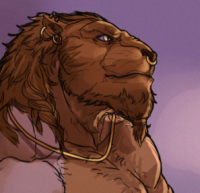 | |
| Race | |
| Pronunciation | Ash-Sha |
| Classification | Gorr |
| Common Nicknames |
|
| Languages | Common, Ibeth |
| Naming Customs | Egyptian |
| Racial Traits | |
| Distinctions | Animalform beings who try to regain their lost glory |
| Maximum Age | 140 |
| Eye Colors | Hues of brown and yellow, sometimes blue and green also |
| Hair Colors | Fur patterns vary, with fur colors of ochre, brown, beige, white, black, etc. |
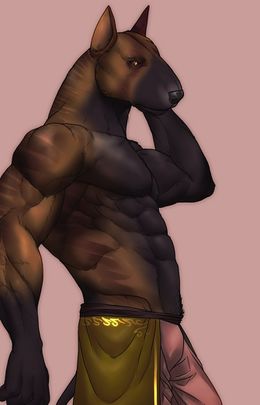
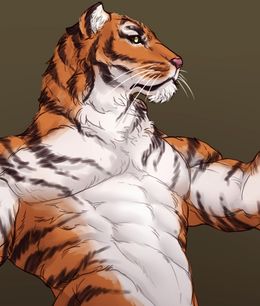
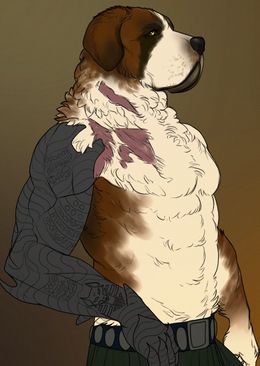
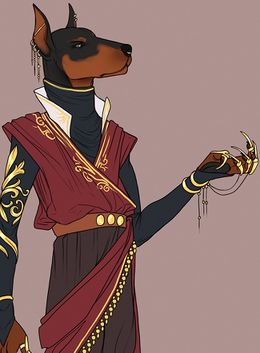
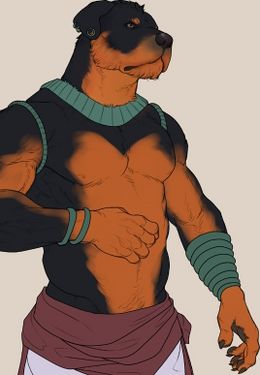
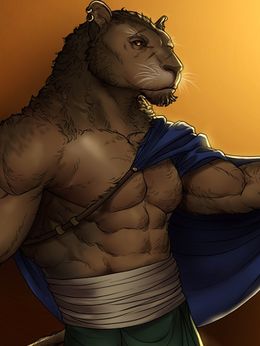
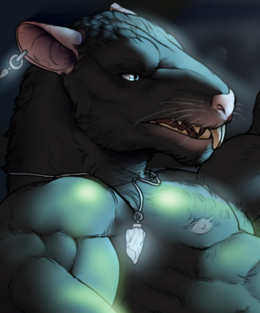
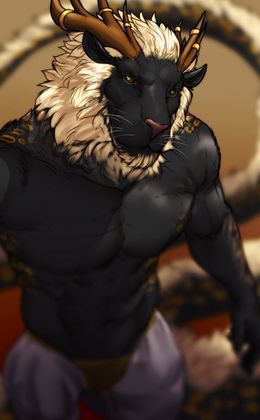
Origins
The Asha are one of the oldest Races in Aloria today, whose peak of civilization was millennia in the past as leaders of the Dewamenet Empire. However, their rise had the great misfortune to be within sight of the Allorn Empire and its first Empress, Talea, daughter of Estel and prophetess of the Estellon Faith. Relations between the Asha and the Allorn soon deteriorated, and the war that followed had an unfathomable death toll. The Asha were ultimately broken over the knee of Allorn domination, and millions of their kind were enslaved by the Teledden and their fellow Nelfin. It was on the backs of the Asha that great works and the golden age of the Allorn Empire came to pass, but their blood was spilled more directly as the Teledden and others fell into worship of the Void, sacrificing uncountable thousands of Asha slaves in sinister rituals in the name of dark arcane power. This abysmal existence came to an end in the Cataclysm and Wildering, when Magic across the world changed forever, and the slave masters found themselves relatively powerless compared to before. For the first time in centuries, Asha slew Teledden, Fin’ullen and many more in a mass revolt alongside other oppressed Races while wielding their Living Metal. The Asha led the anti-slavery charge out of the ruins of the Allorn Empire, fleeing enmasse to the eastern coastline of their ancient prison, and building massive bridges of Living Metal to reach an oasis where they could be safe; the Ashal Islands. They were guided in this by the Siwath-Khenu, Asha who had hidden at the fringes of the world and now helped to guide their people home. The ancient, hidden machinery came alive in the presence of the former slaves and survivors both. Ever since that time, the Asha have continued to rise and delve into their lost past for answers, and even greater technology, much to the disdain, horror, but also fear, of many Teledden and their closest allies.
Core Identity
To be an Asha is to be a person whose past heritage and glory was stolen very violently and magically, leaving an eternal mark upon one’s mentality. Many Asha live free, and thrive with that great freedom, but are forever concerned, suspicious and paranoid about events which might draw them into a status of servitude once more. Some are lost on their own, unable to find purpose when leaving their homes into a wider world full of possible threats, and so cling to others of their kind when found as oases of sanctuary and stability. Others view the clean slate of a lost past as freeing, with a certain history so recent leaving them to define themselves, and live a unique life apart, or central, to a community, able to experiment or explore. It is this last part in particular that the Asha have clung to, the idea that they were denied freedoms, dreams and goals for centuries, and as such should taste as much of it as they can possibly get their hands on. An Asha never seeks to sit still, always seeking the next opportunity, whether that is to acquire material, sentimental, or emotional value.
Ashal Diaspora
While the Asha have reclaimed a new homeland, they are still a people without easy access to their original place of origin. Some do, such as the tribes of the Siwath-Khenu, but they are few in number, and empty deserts with scattered ruins often targeted for destruction by Ithanian-hired gangs are a poor substitute for the marvels of the past. Even the Ashal Islands are not completely safe, for they sit extremely close to Teledden territories, and latent fears of an attack against this land dwell among the populace. For that reason, while many Asha thrive on the Islands, there is an itinerant undertone to the Race through their Corsair Fleets which sail the waters of the world, and the enclaves of free Asha surviving in lands east of their ancient homeland. This is more true now than ever, as the population of Asha in Corontium continues to grow.
Recaptured Past
Asha are always piqued by hints of the past, or small clumps of history they can latch onto that reveal more of what the Dewamenet Empire once was. Every Asha grows up with tales of the great Empire they once created thousands of years ago, and how it was violently stolen from them by the Allorn who then proceeded to enslave them for an almost inconceivable long amount of time. Each artifact or discovery made of the Dewamenet Empire unleashes fervent discussions and debates among the Asha for the implications, and any new strip of information, or a chance to speak to some divine entity to discover more of the Dewamenet past is sure to invigorate any Asha. The Siwath-Khenu are often at the heart of these efforts, while those of the fleets and the cities seek to exert their wealth or power in guaranteeing their safe transport back home.
Identity Crisis
The Asha are a Race uniquely beset by a Mundane vs. Occult identity crisis, and a wider set struggle of clan-favoritism. Thousands of years of slavery at the hands of Elves have left many of the Asha changed, some permanently, in ways that others would consider lost or disfigured. While there is a general sentiment that any Asha, even Half-Asha, have the right to reclaim their heritage, some Asha find other Asha who use Magic hard to stomach, especially because Magic was used to steal so much from them. Asha aren’t hateful of Magic outside of their Race, but have a very hard time processing why any Asha would willingly give into dabbling with these infernal forces. With the strict anti-Occult stance taken by the Corsair Fleets and the Ashal States, what few Asha Mages exist have to often live in other countries that tolerate their crafts. They often find great solace with the Silontaar, the offshoot of the Asha people who are magically gifted and live in distant isolation.
Design
Mental Characteristics
The Asha do not really have any unifying personality traits. As a Race that was beaten into submission for so long, many old customs and traditions were lost or fragmented with time, meaning most modern Asha are a clean slate in terms of mentality towards the world, each other and themselves. Perhaps the only real unifying trait that the Asha have is pride in their fur and especially their tail. Asha can be gregarious or shy, energetic or sluggish, but between all of them, regardless how extroverted they are, one does not touch their fur without their permission, and above all one never touches their tail. It was common practice in the Allorn Empire to cut off Asha tails, and so their first recaptured sentiment is that their fur and tails are their own, and no-one may violate them without their strict consent, a freedom denied them in the past.
Physical Characteristics
The Asha can best be described as furred humanoids with heads and body parts shaped more like that of animals than one would see in a traditional Ailor or Nelfin. The Asha are similar to Urlan in that they have the head of an animal, but the body of a bipedal humanoid, but different to the Urlan in that they are entirely covered in fur at all times, and have a much broader spectrum of appearance. Because of intentional breeding programmes endured while enslaved, many of the Asha have diversified to such a point that there is no common trend of physical appearance. Asha can be slender, bulky, stout, lanky, petite, voluptuous, ranging from Dwarven shortness to the tallest of Teledden height and more. There are some additional physical traits to note below.
Animal Types
The specific Animal Types available to make Asha Characters is quite expansive, but there are some limitations and expectations placed on the Players. Below is a full list of all available Asha Types:
- Canine Species: Think of Wolves, Foxes, Domestic Dogs, Wild Dogs, Jackals, Dingoes, Coyotes, etc. It is important however when choosing Canine Species that the Character is never mistaken for a Werewolf-like Marken.
- Rodent Species: Think of Rats, Bats, Mice, Possums, Meerkats, Minks, Badgers, Chinchillas, etc. It is important when choosing Rodent Species that the Character doesn’t become a Skaven mockery.
- Feline Species: Think of Tigers, Lions, Leopards, Cougars, Jaguars, Ocelots, Sabretooths, etc. This also includes Domestic Cat species like Tabby Cats, Maine Coons, Siamese Cats, etc.
- Bear Species: Think of Pandas, Polar Bears, Brown Bears, Grizzly Bears, Black Bears, etc. It is important to note that Humanoid proportions remain in effect and being a Bear does not grant Combat RP advantages.
- Other Species: A list of other less categorical species are also available like Kangaroos, Koalas, Horses, Deer, Sheep, Hyenas, Otters, Primates like Gorillas or Lemurs, Beavers, Donkeys, Okapi.
- Hybrid Species: Asha can produce Hybrids of any of the animal types above. This can include combinations like Wolf/Fox, Cat/Fox, Fox/Rabbit, Tiger/Raccoon combinations, etc. Hybrids can only ever be a combination of 2 species.
If you are unsure if a Species is acceptable while not mentioned on this list, as this list is fairly strict, please send in a ticket to the Ticket Bot in the RP Community Discord. When Asha reproduce with different Species, children are born with 80% chance of the species of either parent, and 20% chance of a completely random species from the list above. Same species parents reproducing always results in the same species children.
Fur Patterns & Colors
Asha Fur Patterns and Colors can be varied and wild. They can have the traditional fur patterns and colors of the species they share an appearance with, such as for example orange and white fur on black stripes of Tigers. However, different colors are also possible, for example a black-furred Tiger with white stripes and brown spots. Patterns that do not occur on specific species can also be used, for example the white and black stripes of a Zebra can be seen on an Otter Asha. The only limitation is that the colors cannot be excessively vibrant, like those of the Silontaar Race. For example, a Fennec Asha with a gentle soft pink or mint-green fur and white belly patches is acceptable, but not a hot-pink and cyan-blue Horse Asha. It is always also important that skin colors do not allow for a Minecraft Skin to be misidentified as a different Race. When for example dabbling in greens, make sure the Minecraft Skin does not get mistaken for a reptilian Allar. Asha eyes are fairly varied. They can have either white, gray, or black eye whites, while their pupils can be any shade of blue, green, gray, brown, or yellow.
Half-Asha
The Asha have a unique attitude towards the Half-Asha, in that they consider the Half-Asha full-blooded members of their Race, even if they look very little like them. Half-Asha can reproduce with any Race that can also reproduce with other Races, which will always result in Half-Asha called Feka-Asha. Feka-Asha take traits from their non-Asha parent, so if the mother is a Fox Asha and the father is an Ailor, the Feka-Asha child would for example have fox ears, fur on the arms and legs, and a fox tail, with Asha eyes. While players have a lot of liberties when it comes to designing what traits Feka-Asha inherit from their Asha parent, the Lore Staff asks the players to please respect the design of the Race and not dilute physical traits to the point of non-recognition. What this means is that a person who looks presentably just like a normal person, but with Bunny ears on top of their human hair, is not a Feka-Asha. A person who has only whiskers, cat ears, and cat claws, is not a Feka-Asha. These aesthetics are easier to reproduce with Mutations. Minecraft Skins should always be able to read that a person is a Feka-Asha, and if the animal-like traits on the person have been reduced to the point of single-traits, then a Character is not a good Feka-Asha design.
Asha in Regalia
The Asha formerly had a very rough time in the Regalian Empire, the significant Ithanian influence on the former Imperial Family seeing them remain low in social standing, and existing as social pariahs, with vast amounts of misinformation spread as to their nature and millions of their kind remaining in bondage. However, beginning in 250 AC, the Corsair Fleets of the Asha showed their immense strength in several engagements, and Ithanian influence waned in court politics. By the time Emperor Alexander I ascended to rule the Empire with the passing of the torch to House Kade from House Ivrae, the Asha were actively courted to be allies against the Teledden and other Altaleï Nelfin. This saw Asha move to Corontium, the heartland of the Regalian Empire, in unheard of numbers compared to the prior two centuries, and thriving settlements popped up on previously lightly inhabited southern islands. The Ashal Islands are now also part of the Crown Alliance, a military pact formed by the Regalian Empire with other major nations. Despite these improved ties, there is still a tension regarding the Asha’s active involvement in antagonizing Sovereign Ithania, and other minor actions taking place in the name of the Dewamenent legacy. Ultimately, the Asha are a people on the rise in Regalia, isolated from some parties, embraced by others, but not to be underestimated with their uniquely ancient culture, and marvelous technological capabilities.
Racial Abilities & Specials
Racial Abilities are generally a set of unique powers and effects that all peoples of that Race all innately have, while Specials are more passive, aesthetic focused capabilities. Specials are defined per-page, while Abilities can be searched on the Ability List page to determine their generic function. Asha have a mix of Abilities and Specials themed around Living Metal, their Physical Form and Ancient Knowledge. Half Race characters select a Dominant parent, and take all the Racials & Specials from that dominant parent. (In this case, a dominant parent Asha would be Half-Asha) Half Races must have a majority of their physical features come from their dominant parent, including but not limited to skin tone, hair or fur color, ear shape, or eye color.
Abilities
| Ability Name | Ability Type | Ability Range | Ability Description | Modifiers |
|---|---|---|---|---|
| Body Claws | Morph Power | Self | Grants the user Body Claws | Asha Modifier |
| Asha Speed | Constant Passive | Self | Grants the user Asha Speed | N/A |
| Higher Speed | Toggle Passive | Self | Grants the user Higher Speed | N/A |
| Warring Metal | Summon Power | Self | Grants the user Warring Metal | N/A |
| Aiding Metal | Trigger Passive | Self | Grants the user Aiding Metal | Asha Modifier |
| Intrusive Metal | Instant Power | Emote Range | Grants the user Intrusive Metal | Asha Modifier |
Specials
- Dewamenet Legacy: The Asha Living Metal is inexplicably linked to their Mundane status. If an Asha becomes Occult whether through Affliction or by learning Magic, Asha no longer have access to Living Metal. The Specials / Abilities derived from Living Metal are still there, however, the Living Metal is replaced with Magical Energy which is a formless glowing light of any color chosen by the player. Additionally, Asha gain the Spell Point Buy Special Lightning Immune without needing a Spell Point Buy investment, and without being Occult.
- Dewamenent Born: If an Asha invests at least 1 Point in either Technician Point Buy or Artificer Point Buy, they can pick Living Metal as their branch, even if they did not invest in technician.
- Ferromancy: Living Metal grants the Asha greater control over Iron (not Steel). Through controlling Living Metal, the Asha gain telekinesis over Iron within Emote Range, thus being able to open doors from a distance by controlling the hinges, levitating iron nails and pushing them into place, and other such aesthetic actions.
- Dewamancy: The Asha have great control over Living Metal, being able to steer it around in the air like a liquid, and shape it into any shape they like. Living Metal has a great degree of flexibility, being able to create more intricate and finely detailed designs than normal metals would. The Asha can also use their Living Metal to restart Living Metal Constructs found in Progressions.
- Feshawatmancy: The Asha can also control a substance called Feshawat, or Living Glass, which is similar to living Metal, except see-through and made of glass. Additionally, they are only able to steer it and shape it while making physical contact with it, but otherwise it behaves like Living Metal. Feshawat is fragile and despite its liquid form, can be shattered with weapon impact. The controller can also give it any color they like, or any texture or inner material like glitter or color ribbons within the glass-like material like glass marbles.
- Steam Control: The Asha have a great deal of control over the temperature of water, both ambiently, and within close proximity to them. The Asha are able to flash-boil any liquid on them, causing it to instantly evaporate. Additionally, they can flash-boil any larger amount of liquid near them, causing it to instantly develop steam. Steam never hurts an Asha, nor does dry heat. This liquid boiling cannot be used to harm others or in Combat.
- Body Vent: The Asha are capable of some degree of control over their body’s size through steam eruptions. By venting a great deal of heat from their body, Asha can either lower their Body Shape (becoming more slender, shorter) or increase it (becoming taller, more muscular). This is purely aesthetic and confers no Combat Advantages.
- Sulfur Control: Asha claws have curious sulfuric attributes. When struck against hard porous surfaces like stone or metal, they produce a flint-and-steel like spark, thus being able to ignite cigarettes or small tinder. If an Asha claps their hands together quickly, making the nails touch, they can produce harmless gunpowder explosions that produce a loud clap, flash of light, and puff of smoke. Flicking their nails can also produce a firecracker-like effect. This cannot be used to obscure vision in Combat.
- Predator Vision: Asha have night vision in dark environments and at night, giving them perfect vision in darkness. This allows them to see even in low light environments inside, but does not protect them against Ability based Darkness. Asha also have excellent depth vision, allowing them to snatch for example buzzing flies from the air with ease.
- Deathspeech: Asha are capable of speaking and understanding Deathspeech or Shadetongue either when it is spoken by Ordial Entities, or by others. Deathspeech is a unique Language because it cannot be learned the traditional way, only specific Races and Afflictions have access to it. Additionally, it is also a language that has no defined alphabet and cannot be properly read, the runes and markings varying between the Cultures and Ordial cults that use it, though it is always identifiable as Deathspeech. It also defies being recorded, as the sound just becomes gibberish when any type of recording medium is used to try and replay it, even memory-based Abilities or Specials.
- Asha Aesthetics: Asha tend to not use Magic, but if they do, it is mostly Ordial in nature, and usually has aesthetics based on funerary rituals. They are more inclined to machinery powered and made with Living Metal.
Culture
|
Asha Cultures | ||
|---|---|---|
|
The Niwtah, City, or otherwise called Kingdom Asha, are the largest population of the Asha people. They are based in the Ashal Kingdoms of the Ashal Islands, though some have recently migrated to lands in Corontium under the Regalian Empire. They benefit from marvelous works of Living Metal, and often devote their time to more artistic or cultural pursuits. They are not bereft of warriors, however, and are known for their powerful land armies, though a general muster has never occurred. The Niwtah culture is based on Ancient Egypt. | ||
| ||
|
The Hetawpesh or Corsair Asha are far more commonly seen in wider Aloria compared to the Niwtah Asha. While briefly finding peace in the Ashal Islands, the original Corsairs soon departed to carry out a mission of vengeance against their ancient oppressors, as well as seeking out foreign knowledge and skills. Many are pirates, hunting and destroying vessels of slave-keeping civilizations, though others tend to large floating cities on the waves, or sell their services for coin. The Hetawpesh culture is based on a blend of Ancient Egypt and the Barbary pirates of North Africa with a healthy dose of fantastical elements. | ||
| ||
|
The Siwath-Khenu are the oldest Asha culture to exist in Aloria today, and formed from the original survivors of the mass-enslavement of the Dewamenet by the Allorn Empire. The Siwath-Khenu thrived by hiding in the depths of the desert in Ithania, among the ruins of their people, but some also kept close to the soon-barren Ashal Islands, in hidden coastal enclaves. They remained at the fringe for millennia, keeping ancient traditions alive, before helping their people achieve The Great Journey to their new homeland. Today, they remain, but are the least populous of the Asha subcultures, with most who remain surviving in the Ithanian desert, but some have come to the Ashal Islands, and keep to the isolated, barren lands of the interiors to each island. The Siwath-Khenu culture is based on ancient/classical Numidian culture. | ||
| ||
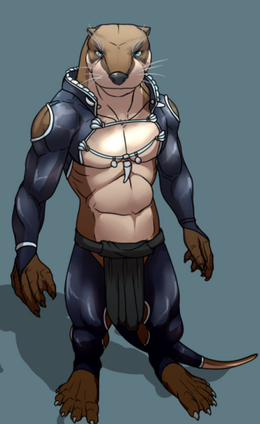
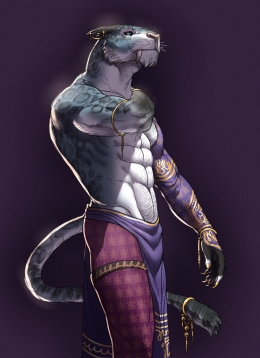
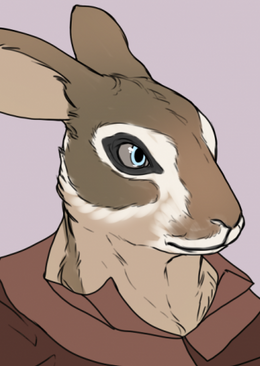
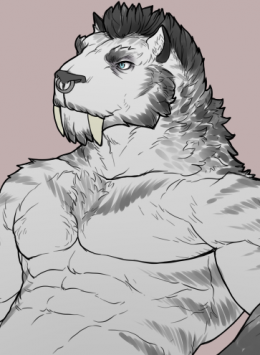
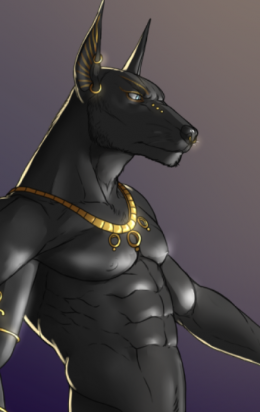
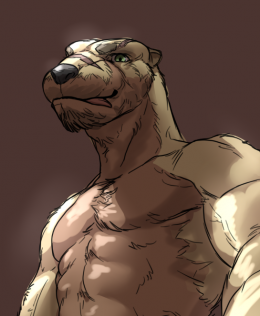
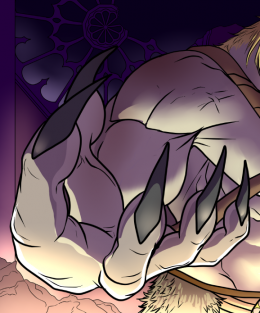
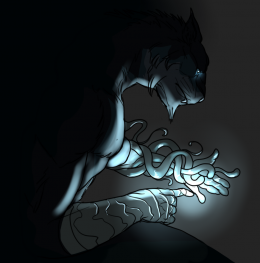
Language
The Asha speak a Language called Ibeth, a modern Language developed from the interpretations of Dewamenet writing left on the Ashal Islands and in the Ithanian deserts. As such, the Asha Language has a written alphabet of hieroglyphics that dates back to the Dewamenet era, but a spoken language and phonology that is entirely modern. The Ibeth language has no common ancestry with any other Language across Aloria, and is purely made out of what little words the Asha understand from the past with the context of writing applied on top, and the gaps filled in by more intellectually inclined Asha. Ibeth sounds fairly guttural, with soft g’s and ch’s and hard kh’s and dh’s, interspersed with many vowels. Ibeth is spoken across all subcultures far and wide, as even the Siwath-Khenu tribes have adopted Ibeth as a means to stay close to the other Asha, though they once spoke a diminutive form of the Dewamenet Language which has now died out. Due to the guttural intonation of Ibeth, Asha may have trouble not over-pronouncing ‘r’, ‘z’, ‘k’, and ‘d’ sounds when speaking other languages. The Ibeth language is based on real-world Ancient Egyptian
Naming principles also follow Ancient Egyptian. It is more common for Asha children to be named after items, events or things that played an auspicious role in their birth. For example, the word Nefer means beauty, so a child born with striking beauty may be called “Nefer” also, while a child born with a cold sniff might be called “Tepi”, which is the Ibeth word for sniff. One that walks early may be called “Ahat”, meaning standing, and one that is strong in battle may be called “Keded”, meaning slaughter. Asha parents or sometimes even Asha themselves may change the name of their child or in adult years to something else if they feel more strongly associated with that particular name. Asha surnames are always based on their gendered parent - for example - if a girl born from her mother Herep arrives on a sorrowful occasion, she may be called Ianew, daughter of Herep. Daughters are named after mothers, while sons are named after fathers. Rulers and priests tend to extend their names, with “-hotep” being a common suffix for a male of high respect, while “-amun” fulfills the role for females of high respect.
Religion
It is believed by most that the ancient Asha in the age of the Dewamenent worshiped a greater array of gods, or had a greater religious pluralism than may be understood now. As it stands, the current faith, the Faces of Baskarr, is a narrower version of their ancient mythology, the five remaining deities kept alive by the prayers of Asha to gods they barely knew, and the formalized worship of the Siwath-Khenu. The Asha have thoroughly embraced this religion since their freedom, but there is another force ever-present in their society. Why or how is not clear, but Ordial powers also hold a significant role in the Asha conception of the world. While Ordial Cultism has beings like Khannar, there is also Imeshret the Night-Gazer, an Ikon of the Ordial plane. All of this Ordial alignment is ultimately an undercurrent to the society the Asha have built, as the Faces are their far more public face, with the operations of Ordial-worshiping Asha private, and out of public sight. It is also essential to note that the Asha do not use the term Ordial to describe the afterlife, and they, in fact, believe that life after death is as natural as the living world.
Families
Childhood
The Asha have a strong cultural inclination toward raising resourceful and independent children. They are given everything possible in their younger years, taught skills that will suit them as adults, and instructed in the use of their Living Metal and Living Glass. Each subculture has specific areas of focus for children at this early time, and their instruction lasts until their seventeenth birthday. The day after this celebration, they are ejected from the home of their family, being well-prepared ahead of time for this event. Most settle into quarters with fellow Asha of a similar age, and seek to prove themselves, and show their skills, gradually being allowed back into their family clan in time. Half-Asha (being Feka-Asha), however, have a difficult position in Asha society when growing up. The Asha are generally suspicious of the other Races, and reproduction with non-Asha can be reason enough to have an Asha woman rejected from Asha society and forced to live on the fringes of it. Feka-Asha are always stuck in an endless cycle of trying to prove themselves to Asha society, but never quite making it into their fold. Whereas Asha children generally have a happy and very social upbringing, Feka-Asha are isolated and lonely if they are raised in Asha society. Asha living elsewhere though, mainly in Corontium, are more tolerant of Feka-Asha, allowing them to exist in their part of their local societies without much issue.
Adulthood
As mentioned above, Asha adulthood is achieved at seventeen years of age, and forces the child to make something of their skillset or knowledge. If they do not, they simply cannot return to their home clan, but other clans may be interested should their focused skills or end products of their efforts lean into their interests rather than that of their blood relatives. Asha families are referred to as clans, and an average clan includes a patriarch or matriarch, including their grandparents, their siblings, their mate’s grandparents, their cousins and their children. Asha society does not have an overt male or female bias, but each subculture has their own methods of determining leadership or primacy. Generally speaking, the wisest or strongest (or both) Asha in a clan is made patriarch or matriarch by popular support of all the other members except for children who do not get a say. New family members, be that blood members of the clan expelled and returning, or entirely new faces who seek entrance, are judged by these leaders alone first, and then a wider group of the adults in the family.
Romance & Gender Norms
Asha views on romance are immensely traditional, despite their fairly open and laissez-faire society. The Asha are extremely strict on adultery, with this act being one of the worst crimes that one can commit in the Ashal Kingdoms. Asha traditionally do not engage in romance until they are at least 20 years old, after which they have the policy of waiting until the right partner appears. Asha rarely go looking for partners, believing that one can only ever truly be loyal to one’s soul-mate, and that soul-mates are met by happenstance, not while they are being sought out. It is permitted for Asha to be intimate with one another socially speaking, but mating outside of what they call “bondship”, is strictly taboo. Polygamy, polyamory and bigamy are strictly taboo and reviled by Asha society, who prize singular loyalty and dedication above all. Partners are chosen for life, except for two ways to end a partnership: betrayal or death. In the case of death, the Asha remain celibate for the remainder of their life in homage to their partner. In the case of betrayal, an Asha may re-bond, though is usually considered “spoiled” by other Asha, and may end up remaining celibate out of circumstance, not want.
On the matter of gender norms, the relative equality of the sexes has been mentioned elsewhere. As for matters of sexuality, same-sex relationships are not considered taboo in Asha society, but there is a communal expectation that homosexual bondships adopt or take care of orphans from recently deceased heterosexual couples, so as to take their burden for the Race’s continuation in society. Asha generally have large families, with any average Asha couple having around 12 children. This is largely also the reason why some consider Asha women to be fierce lovers with an appetite, resulting (in the eyes of the Asha) in an unfortunate population of Feka-Asha in other societies, as well as in the Moon-Ports and Fair-Port.
Fashion
Asha clothing is often very simple in its application of garments yet rich in texture and patterning. Beyond a simple chest cloth worn by women and leather straps worn by men to attach objects to, most Asha rarely wear any clothing on their upper body when they don’t seek a reason to blend into other societies. On their lower bodies meanwhile, all wear a so-called Satoor, a dress-like clothing piece often in earthen or burgundy color tones with a variety of intricate patterns in vibrant colors that spans from the waist to the ground. These Satoors are often specially tailored to allow a tail to protrude from the back, and also have individual cuts on the front and sides to allow a free range of motion for Asha in combat. The Satoor is, in fact, a crucial piece for many cultural traditions of the Asha. As part of decoration for the Satoor, high officials may also wear shoulder capes or shoulder pelts from Muff-oxen. Jewelry is also a very much prized accessory for all genders of Asha, with numerous necklaces and ear piercings being the norm in adults. The Asha recognize the difference between a civilian Satoor and a combat Satoor in that combat Satoor cut off at the knees, while those for civilians end at the ankle or a bit higher.
The Asha also have a fabric that was once unique to them alone, produced by the coastal Asha which has since expanded world-wide. Elastan, a form of lycra, is made from natural blue threads excreted by the unique coral species called Mewnes. The fabric is inherently liquid deterrent, and Elastan clothing made by the Asha usually covers their arms and shoulders, as well as their legs and waist, but does not cover their torso. Elastan was eventually also mixed with other fabrics, creating Peltastan, a form of wooly spandex. It has properties similar to those of Elastan, being form-fitting and soft, but Peltastan is not water repelling. Peltastan clothing is usually worn on the torso and upper leg area, while a half-Satoor is worn over it like a battle skirt, often with shoulder pads to boot. Such pads are often light and decorative, as Asha effectively do not wear armor, in order to benefit from their superior agility over other Races. When protection is required, Living Metal is capable of forming a quick, sleek coating for their defense.
World View
World View is optional content that helps give Asha flavor and depth.
- Asha society is one of the only societies that strictly bans Magic, even the passive usage of it, not only because the Asha lose control over Living Metal when using Magic, but because Magic has played such an important role in their suffering throughout their existence. Why Asha Living Metal ceases to function when an Asha learns or uses Magic is not known, but some speculate that whatever entity granted the Asha Living Metal, was against them using Magic.
- The Asha’s views of Magic may be scoffed at as limited to many, because their society only seems to recognize the Exist and Void as powers, while ignoring Ordial entirely. This is for good reason, however, for both the Exist and Void were used to hurt the Asha, while Ordial power has been part of their people’s culture for a very long time. In fact, to the Asha, the term Ordial means nothing, as the idea of the afterlife and life beyond the physical world is crafted into their faith and customs, and is viewed as completely natural.
- Magic usage in the Ashal Kingdoms is strictly illegal, and on the high seas, the Asha Corsairs are known to execute Mages immediately after a battle and if any were captured. Many know this, which is why the waters around the Asha States are called the “Mageless Waters", on account of all Mages veering far around the general raiding zones of the Corsair Fleets.
- Tails are immensely important to the Asha, and serve as major indicators of non-verbal emotion, and expressions of pride. An Asha without a tail is like an Asha without pride, and faces humiliation in Asha society. This is largely the reason why it was so common for the Allorn to cut off Asha tails at birth, a practice that still exists today. Some Asha have gone through lengths to re-acquire their tail, most using Living Metal to replace it.
- Common uses of the tail include, but are not limited to: expressing adoration for a person depending on the tightness of a tail included in a hug, using the tail to point at desired objects or slowly caress them to show interest, swishing the tail around to express candidness or pride, binding the tail around one’s leg or waist to express fear or loathing, striking the tail on the floor for a challenge or mockery, slapping others with a tail in teasing or flirtatious manner, and holding objects of great importance with the tail by wrapping it around them. Nearly every statement or request made by Asha includes some sort of positioning or motion of their tail, indicating their intent or emotional feeling behind it. This is why it may sometimes be hard for Asha to lie to other Asha, as many of these tail movements are involuntary.
- The worst insult is to pull on an Asha’s tail, stand on it, or generally just dismiss or ridicule the appendage. Asha tails are collected by some Kathar priests and priestesses for Void Worship rituals, or as trophies for the amount of Asha sacrificed to the Void Gods, largely being the reason why the Asha have a particular hatred for Kathar religious leaders, more so than all the other kinds of Kathar.
- The majority of the Asha’s active military power can be found on the high seas, where they are considered some of the most skilled sailors and marines known to Aloria. Asha are unrivaled in their ability to sprint, dance, pounce, roll, and move around on deck, flinging themselves from ropes and balancing on thin beams to gain the upper hand and the higher ground.
- The Asha commonly use the Shefdew, or Moon-Blade polearm in their combat with others, alongside the Sensy, a smaller blade seen used on Asha tails. These weapons both form part of the Tutelage of Mirah, the form of instruction used to teach most Corsairs and land forces of the Asha. Still, Asha are capable of picking other weapons too, and Asha mercenaries have been seen using a wide range of blades and more.
- The Asha frequently use beasts of burden or large animals for the purpose of siege, or general brute force damage during a battle. These are most often the Maarhanet, or Seqherat. However, the use of Living Metal constructs has only continued to grow in recent years.
- Asha cuisine is heavily varied as they are spread across Aloria. In general, they have a simple but rich diet based on meats served with spices, eggs and dairy products such as cheeses and yogurt, the dish Car-Ki’fo best exemplifying this blend of ingredients. Their meat exclusively comes from geese, quail, pigs, cows and any fish that can be caught, as they are highly sensitive to the killing of animals which look like members of their Race.
- The Asha are a physical Race, meaning nearly all forms of their recreation and relaxation involve some physical activity in their society. To that end, they have developed Sun-Courts, large open-air squares for physical activity and sports to be performed in. Enormous trees or Living Metal structures serve to create some shade in these spaces, and the game of Hisad appears in such spaces on a weekly basis.
- An important cultural expression of the Asha involves the Satoor is the Satoor-Bis Kahnar Hakkar, a wild dance performed by one seeking to court another. The dance itself is carried out with leaps involving fierce snarling expressions, grunting, chest beating and wild waving of claws, where the purpose is also to make the Satoor flow with poise and grace, in contrast to the intense expressions. The primary use of the dance is to impress a potential partner with an Asha's strength, though Asha can also perform it to intimidate enemies before battle.
- The boundary between enemy and passion are very thin for the Asha, and the “enemy turned lover” is a frequently seen romantic trope among the Asha, impressed with enemy soldiers or warriors in battle that they fall for them. This event is a rare occurrence in Corsair warfare, as most targets of Asha attacks are slave facilities, slaving ships, and other repulsive places, with few acceptable love interests among the guardians of such places. Instead, it often takes root in fighting pits, or tournament bouts.
- The ritual marriages between the Queens of the Ashal Kingdoms and the various Corsair leaders are part of the agreements of assistance between these Kingdoms and their ever-sharpening sword in world affairs. The rituals sometimes become actual marriages, but such connections strain the relationship as the Queens insist on keeping all daughters, and reject sons, while the Corsairs consider the intense focus on women from the city-dwellers to be a detriment.
- The Ashal Islands have two notable forms of coastal port. One is the Fair-Port, called Hesepah by the Asha, and is the sole area of the Islands where foreign Races can be found in great abundance. Merchants and artisans live and thrive in this place, and the limited trade the Kingdoms have with the wider world comes through this center. The other form of port are the Moon-Ports, massive facilities capable of handling the hundreds of ships that Corsair Fleets possess. Each Ashal Kingdom has one of these for the use by the Fleets, who cycle in and out of docking their ships for resupply, repair, and celebrations.
- The Great Journey is revered by the Asha as their period of migration from the lands of the former Allorn Empire to their new home in the Ashal Isles. The entire process took three years, and was led by the Siwath-Khenu who emerged to guide their people home. The event is also notable for the baggage train of Ailor and other Races, fellow former slaves, who followed or shadowed the Journey, despite being told they could not settle with the Asha. These other groups ultimately settled along the coastline, and became nations like Daen and Lusits.
- The Siwath-Khenu are currently believed to be focusing on those Asha still mass-enslaved in Ithania, and while overseers, masters and more are keeping their eyes peeled, whispers speak of their mission preparing their fellow Asha for freedom is well underway.
- Unlike the Silontaar, who have a manic fear of the Maraya, the Asha find the Maraya kindred spirits in most cases. Both Races suffered extreme loss in the past, and only recently recovered, or in the Maraya’s case, reawoke, to seek out their long damaged heritage. They also both have unique technologies crafted and specific to their Race. The Asha chalk the Silontaar’s manic paranoia to a corruption of Magic in their very blood, affecting how they see the world, and other dismissive, negative statements.
- The loss of the Repyt Corsair Fleet, which merged with Fin’ullen elements to form the Asha-Fin’ullen Sàllir subculture, was deeply shocking to the Asha Race as a whole. The Arc-Monoliths are frequently harassed by Corsair Fleets and Fin’ullen ships alike, both core elements of each Race disturbed by this union of Asha and Nelfin elements together. The Asha have not attacked their brethren outright, however, for unclear reasons, and any Corsair Fleet element that has done so has been disowned by Fleet leadership.
- The recent rebirth of the Allorn Empire was an extreme blow to Asha hopes for the future, as the fractured politics of the Teledden and Fin’ullen until that point made Corsair raiding operations far easier. Most Corsair Fleets have been forced to pull back from attacks on the Allorn as a result, and have turned their focus on Westwynd and other more central or southern locations.
Gallery of Art
Asha are really cool and awesome, and lots of art has been made of them.
-
Asha clothing choices are considered provocative among other Races, even if they just don't want to overheat because of their fur.
-
Asha can have fur on their chin that mimics the appearance of facial hair, sometimes even braided.
-
Badger and Racoon-like headed Asha are often mistrusted in Regalia because of the cultural associations of these animals, falling into criminal circles.
Trivia
- There has been recent evidence that suggests the Asha may be far older than previously thought. Records of the fall of the Meraic Empire, released in 310 AC, show mammalian humanoids in service to the Race that would become the Maraya, and there is also the extreme paranoia the Silontaar, ancient offshoots of the Asha, have for that pastel Race.
- There are a total of sixteen Corsair Fleets in operation across Aloria, but five are most notable among their number. These include the Medes Fleet led by the unique dual leadership of Ladies Saalamun and Vasnaf, the Sefetjew Fleet led by Lord Kahnef or “Lord Demon-claw” and the Kheni-Hetef Fleet led by Lord Ammunakhonet, a Hollow Warden who has led his fleet since it was created nearly three centuries ago.
- Some believe there are members of the Faces of Baskarr who were long ago killed by the gods of the Estellon pantheon in the war between the Allorn and Dewamenent Empires. It is commonly said only the sages of the Siwath-Khenu could answer such questions, and they are very difficult to locate.
- Some wonder if Ghilland, Herder of Treasured Beings may have a connection to the Asha beyond as the being most closely associated with their enslavement.
| ||||||||||||||||||||||
| Accreditation | |||||||||
|---|---|---|---|---|---|---|---|---|---|
|
| ||||||||

